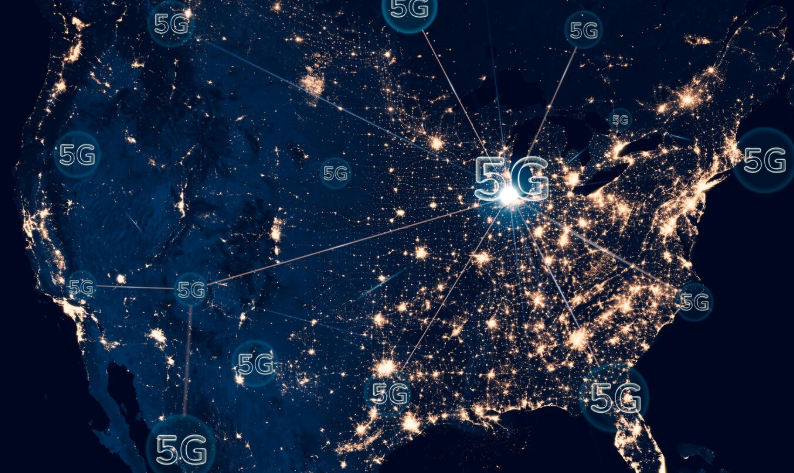The U.S. government is leveraging cutting-edge technology to enhance public services, streamline operations, and increase accessibility for citizens. From artificial intelligence (AI) to blockchain, government agencies are embracing innovation to address challenges and meet the evolving needs of the public. Here’s a look at how technology is transforming government services in the United States.
1. Digital Transformation in Public Services
Modernizing Legacy Systems
Many federal, state, and local agencies are replacing outdated systems with modern, cloud-based platforms. These upgrades improve efficiency, reduce costs, and enhance the delivery of services such as tax filing, unemployment benefits, and healthcare management.
Online Portals and Apps
- IRS Online Tools: The IRS has introduced enhanced digital filing systems, enabling taxpayers to file returns, track refunds, and resolve issues online.
- MySocialSecurity Portal: This platform allows users to manage Social Security benefits, access statements, and update information without visiting an office.
Benefits
- Faster service delivery.
- Reduced administrative burdens.
- Increased accessibility for underserved populations.
2. Artificial Intelligence and Data Analytics
Predictive Analytics
AI and machine learning are helping agencies analyze vast datasets to predict trends and improve decision-making. For example:
- Disaster Response: FEMA uses predictive analytics to allocate resources for natural disasters more effectively.
- Healthcare Insights: The CDC employs AI to track and predict disease outbreaks, aiding in timely interventions.
Chatbots and Virtual Assistants
Government agencies are deploying AI-powered chatbots to provide 24/7 assistance:
- USA.gov Virtual Assistant: Answers common questions about federal services, from passports to student loans.
- State DMV Bots: Help citizens renew licenses, schedule appointments, and access vehicle information.
3. Cloud Computing for Scalability and Security
Cloud adoption is transforming how government agencies manage data and applications. Key initiatives include:
- FedRAMP (Federal Risk and Authorization Management Program): Provides a standardized approach to secure cloud computing services.
- VA Cloud Migration: The Department of Veterans Affairs migrated to the cloud to enhance data accessibility and provide faster healthcare services for veterans.
Benefits
- Improved scalability to handle fluctuating workloads.
- Enhanced cybersecurity with robust encryption and monitoring.
- Cost savings through reduced reliance on physical infrastructure.
4. Blockchain for Transparency and Security
Blockchain technology is gaining traction in government for its ability to enhance transparency and prevent fraud:
- Voting Systems: Pilot projects are testing blockchain-based voting platforms to ensure secure and tamper-proof elections.
- Supply Chain Management: The Department of Defense uses blockchain to track the authenticity and origin of critical supplies.
- Grant Distribution: Blockchain streamlines the disbursement of federal grants, reducing fraud and ensuring accountability.
5. Expanding Broadband Access
High-speed internet is critical for accessing digital services, yet millions of Americans still lack broadband connectivity. The government is addressing this with:
- Infrastructure Investments: The Broadband Equity, Access, and Deployment (BEAD) Program funds projects to expand internet access in rural and underserved areas.
- Affordable Connectivity Program: Subsidizes internet costs for low-income households to bridge the digital divide.
6. Cybersecurity Enhancements
As government services become more digital, cybersecurity is a top priority. Key measures include:
- CISA Initiatives: The Cybersecurity and Infrastructure Security Agency provides resources and coordination to protect federal systems from cyber threats.
- Zero Trust Architecture: Agencies are adopting zero-trust models that require verification for every access attempt, enhancing security.
- Public Awareness Campaigns: Programs like “Stop. Think. Connect.” educate citizens about online safety.
7. Advanced Technologies in Transportation
The U.S. government is exploring technologies to improve transportation systems:
- Smart Cities Initiatives: Federal grants support cities in deploying IoT devices for traffic management, public transit optimization, and sustainability.
- Autonomous Vehicles: The Department of Transportation collaborates with private companies to test self-driving cars and develop safety standards.
- Infrastructure Monitoring: AI and drones are used to inspect bridges, roads, and pipelines, identifying issues before they become critical.
8. Telehealth Expansion
The COVID-19 pandemic accelerated the adoption of telehealth, with government programs ensuring continued access to healthcare:
- Medicare and Medicaid: Expanded telehealth coverage allows beneficiaries to consult with doctors remotely.
- VA Telehealth Services: Enable veterans in remote areas to receive medical care through video conferencing and mobile apps.
9. Environmental Monitoring and Sustainability
The U.S. government is using technology to address climate change and environmental challenges:
- NASA Earth Observation: Satellites monitor climate trends, helping policymakers develop strategies for sustainability.
- Energy Efficiency Programs: AI optimizes energy usage in federal buildings, reducing carbon footprints and cutting costs.
- Wildlife Tracking: IoT sensors and drones aid in tracking endangered species and monitoring natural habitats.
10. Training and Workforce Development
To implement these technologies, the government is investing in workforce training:
- Reskilling Programs: Training government employees in AI, data analytics, and cybersecurity.
- Public-Private Partnerships: Collaborating with tech companies to provide cutting-edge training and resources.
Conclusion
The U.S. government’s adoption of technology is transforming how it delivers services, ensuring they are efficient, accessible, and secure. By embracing innovation, agencies are better equipped to meet the needs of citizens in an increasingly digital world. As these technologies continue to evolve, the government’s commitment to modernization will play a crucial role in shaping the future of public services.


